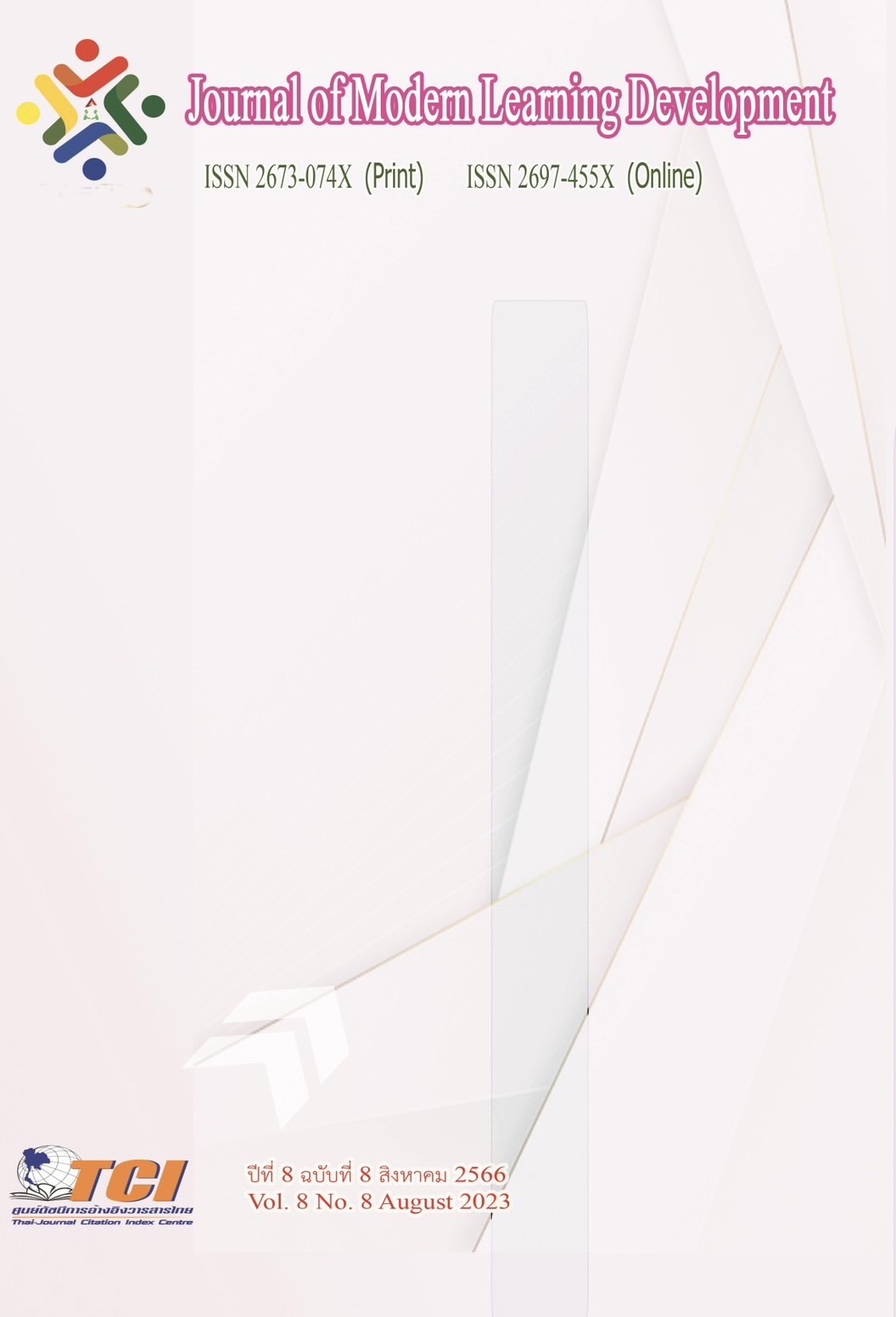Music Creative from Buddha’s historical stucco images at Chaiwattanaram Temple
Main Article Content
Abstract
This research is a creative qualitative research. The purpose is to study Buddha’s historical stucco images at Chaiwattanaram Temple and to create songs from Buddha’s historical stucco images at Chaiwattanaram Temple. The researcher studies concepts and theories from academic works. Data were collected from fieldwork and expert interviews by using an interview forms to collect data about buddhist history archeology and music specialists. Analyze the data to determine the issues for the music creation.
The results showed that (1) Wat Chaiwatthanaram, that located on the west of the Chao Phraya River outside the city, was built by King Prasat Thong. That located on the west of the Chao Phraya River outside the city. The traces of Buddha's historical stucco images showed 3 events: birth, enlightenment and nirvana, which coincide with Visakha Bucha Day,
an important day for Buddhists around the world. (2) Music Creative from Buddha’s historical stucco images at Chaiwattanaram Temple was created in the form of a suite song based on data evidence. It consists of 5 major songs by adopting the principle of Montri Tramote in naming the songs as Nop Apiwan Song, Dusit Sompob song, Rung Arun Wanpen song, La Sangkhan song and Chai Watthanaram song. The author created according to the principles of Thai Classical music composition, and determined to use the Piphat Mai Nuam ensemble to show respect and reflecting the value and importance of Buddhism and to be a guideline for studying Thai music composition and use to learn and practice easily.
Article Details
References
กรมการศาสนา. (2564). วันวิสาขบูชา. ออนไลน์. สืบค้นเมื่อ 16 มกราคม 2566. แหล่งที่มา: https:// webaccess.dra.go.th/rpc/cat/ebook/2565/e-book%20%วันสำคัญทางศาสนา/4.วัน
วิสาขบูชา/ mobile/index.html.
โกสุม สายใจ. (2560). พุทธศิลป์กับการจัดการความรู้. วารสารมนุษยศาสตร์และสังคมศาสตร์ มหาวิทยาลัย
ราชพฤกษ์. 3 (1), 3.
เฉลิมศักดิ์ พิกุลศรี. (2530). สังคีตนิยมว่าด้วยดนตรีไทย. กรุงเทพมหานคร: โอ.เอส.พริ้นติ้ง เฮ้าส์.
ธิติ ทัศนกุลวงศ์. (2561). การประพันธ์เพลงตับเรื่อง “บัวสามเหล่า”. วิทยานิพนธ์ศิลปกรรม-
ศาสตรดุษฎีบัณฑิต, คณะศิลปกรรมศาสตร์ : จุฬาลงกรณ์มหาวิทยาลัย.
บุษกร สำโรงทอง. (2539). การดำเนินทำนองของเครื่องดนตรีดำเนินทำนองประเภทเครื่องตี.
กรุงเทพมหานคร: สำนักพิมพ์จุฬาลงกรณ์มหาวิทยาลัย.
ประทีป เพ็งตะโก. (2537). วัดไชยวัฒนาราม. กรุงเทพมหานคร: ไอเดียสแควร์.
มนตรี ตราโมท. (2538). ดุริยสาส์นของนายมนตรี ตราโมท. กรุงเทพมหานคร, ธนาคารกสิกรไทย จำกัด (มหาชน).
รวี สิริอิสสระนันท์. (2553). พระราชพงศาวดารกรุงศรีอยุธยา ฉบับพันจันทนุมาศ (เจิม) และพระราชพงศาวดารกรุงศรีอยุธยาฉบับหลวงประเสริฐ, คำให้การชาวกรุงเก่า, คำให้การขุนหลวงวัด. นนทบุรี: สำนักพิมพ์ศรีปัญญา.
สงัด ภูเขาทอง. (2539). การดนตรีไทยและทางเข้าสู่ดนตรีไทย. กรุงเทพมหานคร: เรือนแก้วการพิมพ์.
สุรพงษ์ บ้านไกรทอง. (2561). การสร้างสรรค์ผลงานดุริยางคศิลป์ ชุดสัตว์หิมพานต์. วิทยานิพนธ์ปริญญา
ศิลปกรรมศาสตรดุษฎีบัณฑิต คณะศิลปกรรมศาสตร์. บัณฑิตวิทยาลัย: จุฬาลงกรณ์มหาวิทยาลัย.
พระมหาดนัยพัชร์ คมฺภีรปญฺโญ, สัมภาษณ์, 24 พฤศจิกายน 2565
วีระศักดิ์ แสนสะอาด, สัมภาษณ์, 25 กันยายน 2565
สถาพร อรุณวิลาส, สัมภาษณ์, 17 กันยายน 2565
พิชิต ชัยเสรี, สัมภาษณ์, 24 กันยายน 2565


